Georgios Karaiskakis: Olympiacos, Greece National Team
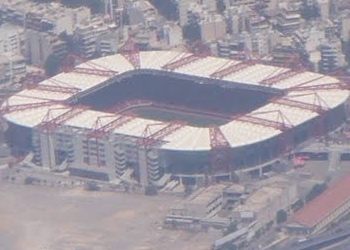
By John2686 (PHOTOGRAPH) [GFDL or CC BY-SA 3.0], via Wikimedia Commons
The Georgios Karaiskakis Stadium is often referred to simply as The Karaiskakis Stadium. It is named after a hero of the Greek War of Independence, Field Marshal Georgios Karaiskakis. A sports venue was originally built on the spot where the current ground stands in time for the 1896 Summer Olympics. Back then it was a velodrome and wasn’t used for football until Olympiacos moved into it after the club was first formed in 1925. It underwent significant renovation in the middle of the 1960s but was rebuilt entirely in 2004 ahead of that year’s Summer Olympics.
The history of the stadium is a little muddled. Technically it opened in 2004 as that was when it was rebuilt, however a stadium of the same name has hosted football matches for decades before then. When the first match was played there and what the record attendance is will therefore depend entirely on the strictness of your definitions. Since it re-opened it has been the permanent home of a Greece national side that had previously moved from one location to another with wild abandon. As this is a guide for a stadium that hosts two teams we’ll tell you relevant information about both and will always put Olympiacos first, should you wish to skip to the bit you’re interested in.
Stats
| Georgios Karaiskakis Stats | |
|---|---|
| Year Opened | 2004 |
| Capacity | 32115 |
| Average Attendance | 23248 |
| Record Attendance | 42415 (Olympiacos vs AEK Athens (1965)) |
| Pitch Size | 105 x 68 (7140) |
| Nickname | Naos |
| Former Name | Neo Phaliron Velodrome |
| Owner | Hellenic Olympic Committee |
| Clubs Hosted | Olympiacos, Ethnikos Piraeus, Greek national football team, Greece women's national football team, Greece Rugby League |
| First Fixture | South Korea v Mexico (14/08/2004) |
| Greece Stats | |
|---|---|
| Year Founded | 1906 |
| Nickname | Ethniki (National), Galanolefki (Sky blue-white), Piratiko (Pirate Ship) |
| Rivals | Turkey, Albania |
| Previous Stadiums | Apostolos Nikolaidis Stadium, Nikos Goumas Stadium, Kaftanzoglio Stadium, Toumba Stadium, Harilaou Stadium, Panachaiki Stadium, Kavala Stadium, Georgios Kamaras Stadium, Athens Olympic Stadium |
| Kit | White & Blue (Home) / Blue & White (Away) |
| Team Owner | Hellenic Football Federation |
| Record Goalscorer | Nikos Anastopoulos (29) |
| Record Appearances | Giorgos Karagounis (139) |
| Olympiacos Stats | |
|---|---|
| Year Founded | 1925 |
| Nickname | Thrylos (The Legend), Erythrolefkoi (The Red-Whites), Kokkinoi (The Reds), Dafnostefanomenos (The laurel-crowned) |
| Club Mascot | Thrileon the Lion |
| Rivals | Panathinaikos, AEK Athens, PAOK, Ethnikos Piraeus |
| Kit | Red & White (Home) / Blue (Away) |
| Training Ground | Rendis Training Centre |
| Shirt Sponsor | Stoiximan.gr |
| Team Owner | Evangelos Marinakis |
| Record Goalscorer | Giorgos Sideris (493) |
Georgios Karaiskakis Photos
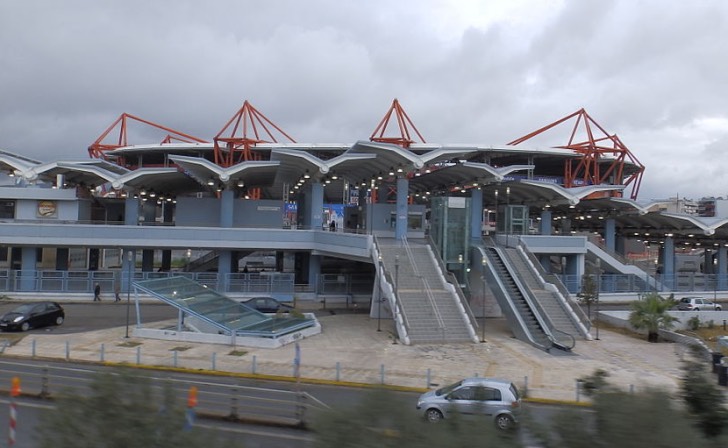
By M(e)ister Eiskalt (Own work) [CC BY-SA 3.0]
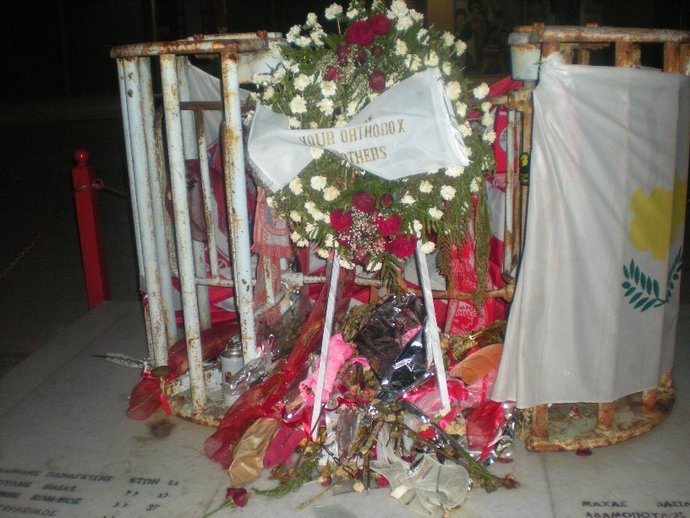
By El Charis 9 (Own work) [CC BY-SA 3.0]
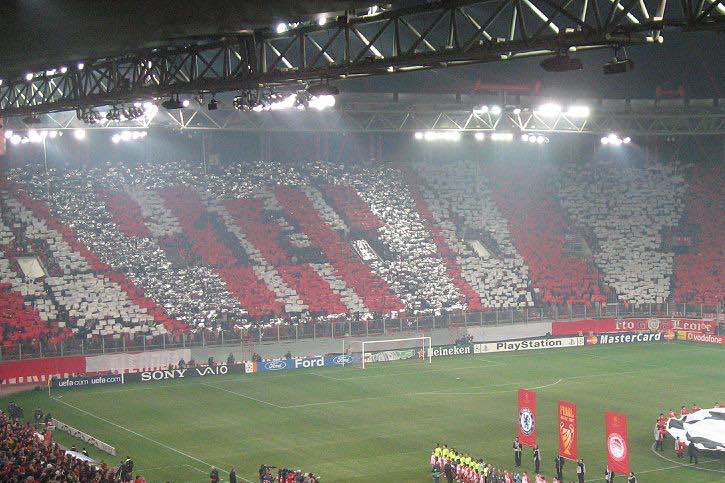
By Mark Freeman from Hornchurch
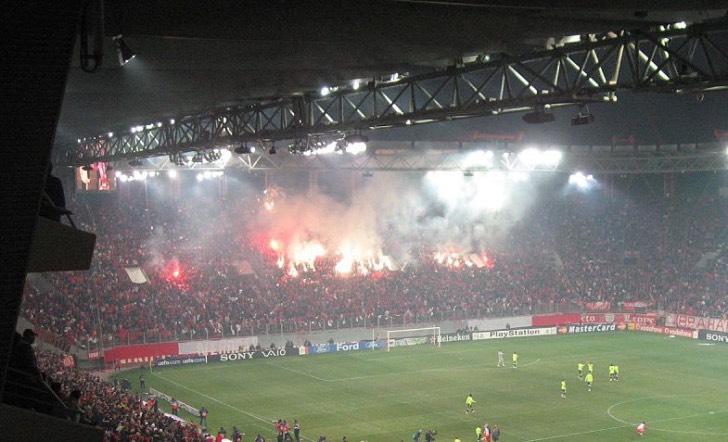
By Mark Freeman from Hornchurch
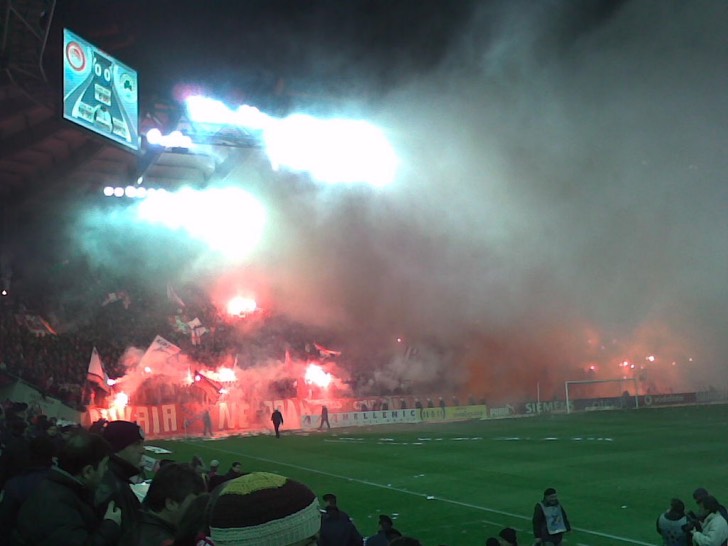
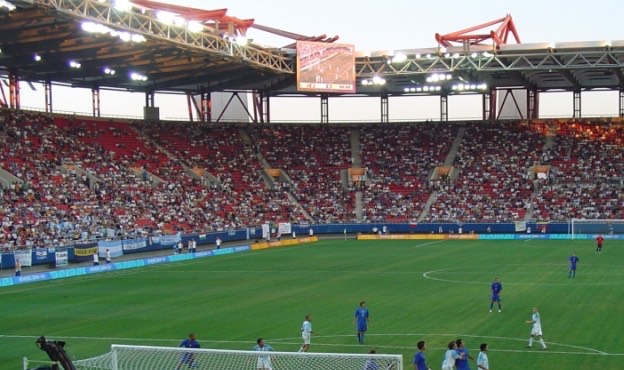
By The original uploader was ΩΜΕΓΑ at Greek Wikipedia (Transferred from el.wikipedia to Commons.) [Public domain]
Georgios Karaiskakis Seating Plan and Where to Sit
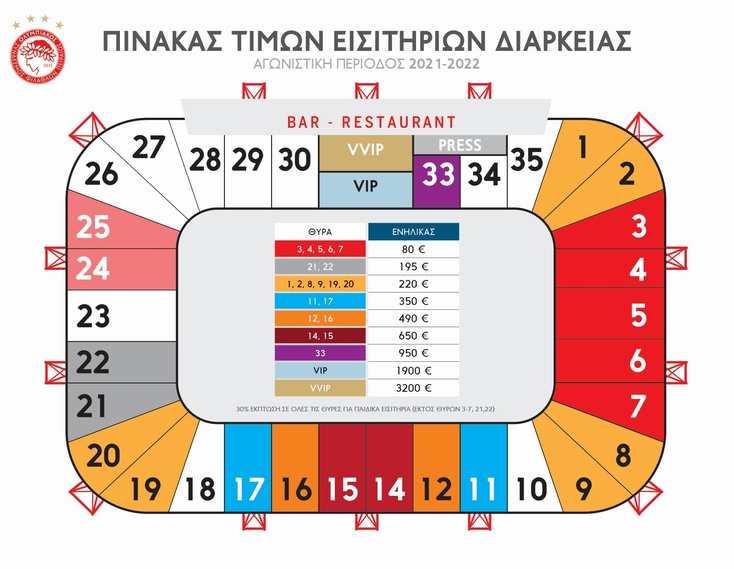
Karaiskakis Stadium is laid out in a bowl style, with rows of seating continuing all the way around the ground. It is essentially one-tiered with the exception of The West Stand that has a row of executive boxes behind the seats.
- The North Stand – Behind the Northern most goal, this stand is the place you’ll find Olympiacos’ noisiest supporters. There is a number ‘7’ etched into the seats as a dedication to the supporters that lost their lives in the Gate 7 tragedy of 1981.
- The South Stand – This is, somewhat predictably, at the opposite end of the ground to The North Stand. Away fans tend to be housed in the Western corner of this section.
- The West Stand – Dominated by executive boxes, this is the main stand of the stadium. As well as the changing rooms and dugouts, this is also where the players’ tunnel is located.
- The East Stand – The largest section of seating in the entire Karaiskakis Stadium stretches along the edge of the pitch, marked out by the ‘Olympiacos FC’ that you can see made up of white seats in amongst the red ones.
Greece Ticket Prices
Ticket prices for national team games are normally decided by the country’s Football Association. In this instance that is the Hellenic Football Federation. If the competition that the match you’re hoping to see is relevant to comes under the jurisdiction of UEFA or FIFA then you might even find that they’re in charge of pricing. In short, we have no idea how much tickets will cost to see the Greece national side play.
How To Get Greece Tickets
Just as the various organisation that sort out the football matches are in charge of ticket pricing, so they do the distribution of said tickets. Have a look on the HFF’s website or those of UEFA or FIFA.
Where to Buy
Olympiacos Ticket Prices
The volatile nature of the Greek economy means that prices for tickets to see Olympiacos play can change with short notice. As with most teams around the world you’ll find that you’ll pay different amounts depending on whether you’d like sit in the posh seats or are happy with just basic ones. Your age will also alter things. If you’re an adult happy to sit in a run-of-the-mill seat then you’ll probably pay somewhere between €10 and €40 for your ticket.
How To Get Olympiacos Tickets
There is a ticket office at the stadium itself from where you can buy match tickets. Greek citizens need to have a Fan Card in order to do so, with tourists normally required to show their passport instead. Obviously one of the best ways of getting tickets is online. You can also phone the club if your Greek is half-decent. There are automated machines around the ground for your use for collecting tickets that you’ve reserved online or by phone.
Where to Buy
Getting To Georgios Karaiskakis
Piraeus is near to the Greek capital, Athens. Here’s a quick look at your best travel options:
Train – To be honest, you can’t really get the train to either Piraeus or Athens from England with any degree of ease. Athens Train Station itself is about six miles from the ground. Once there you’ll be able to get an overground to Piraeus, with Poplar being the most convenient stop to the ground. The Metro is also an option and Faliro on the Green Line is the best stop.
Bus – Bus numbers 040, 101, 130 and the X95 all stop in reasonably proximity of the stadium.
Car – Driving in Greece can be a bit of a laugh, as long as you find terrifying car journeys funny. The stadium is near to the city’s port area, not far from the E75 and the 56.
By Air – Athens International Airport Eleftherios Venizelos is about forty miles from Piraeus, so that’s probably the best place to fly into.
Taxi – A taxi from the centre of the city out to the stadium will take around fifteen minutes to complete its journey and should cost the same number of Euros.
Parking Near Georgios Karaiskakis
There are two decent sized car parks near to the ground for you to try to park in. You’re unlikely to struggle for a space as there’s room for 2,500 cars and you’ll be pleased to know it’s free to park there.
Useful Resources
Georgios Karaiskakis Hotels
If you want to stay in a place full of energy and excitement then obviously Athens isn’t too far away. Piraeus isn’t exactly a boring old dust town, though, so here are some hotel options for you:

Carol - £30+

Hotel Triton - £45+
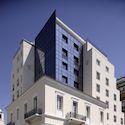
Piraeus Theoxenia Hotel - £90+
Pubs and Bars Near Georgios Karaiskakis
The Greeks know how to have a good time so you’re in for a treat if you head out for a drink or a bite to eat before the game. Here are some of our favourite venues:
O'Connell's Irish Pub
Amsterdam Bar
Oinompýrama
Facilities
The views from pretty much every seat in the ground are spot on. You’ll also come across all of the usual amenities when your in the concourses, too. Plenty of places to buy a drink and grab a bite to eat.
Hospitality
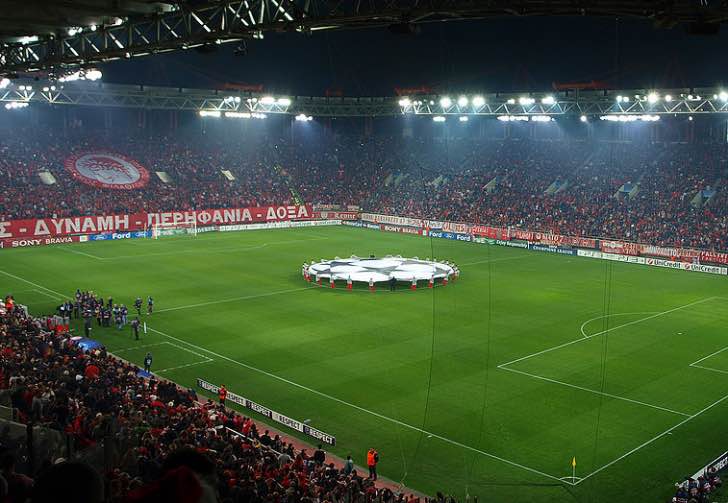
There are forty VIP suites at Karaiskakis Stadium, with two of them able to hold up twenty people each. The rest can hold between ten and eighteen and there’s also the Presidential Suite, if you really want to splash out. The stadium now contains a restaurant known as Vammos, should you wish to have a bite to eat in posh surroundings that offer a cracking new of the pitch.
Private Hire
It’s unusual for a top-class venue such as this not to offer people the option to host a private event here if that sort of thing is on your radar. The club can guide you through exactly what they can and can’t offer, but there is no information displayed on the website.
Stadium Tours & Museum
At the time of writing the club doesn’t offer stadium tours. If anything changes on that front then we’ll update this section. If you can read this, though, then nothing’s changed, because if it had, we would have updated it.
One thing we don’t need to update is the information about the museum. It opened on the 14th of May 2006 and contains a huge amount of exciting and interesting club memorabilia. As well as having a look around the place you can also go to seminars and lectures that are held at the museum on a regular basis. It’s closed on Mondays and it shuts half an hour before kick-off on match days. If you want to go from Tuesday to Thursday then it’s open from 10am until 6pm, whilst that changes to 10am to 10pm on Fridays and from 11am until 3pm on non-match day weekends.
About Greece
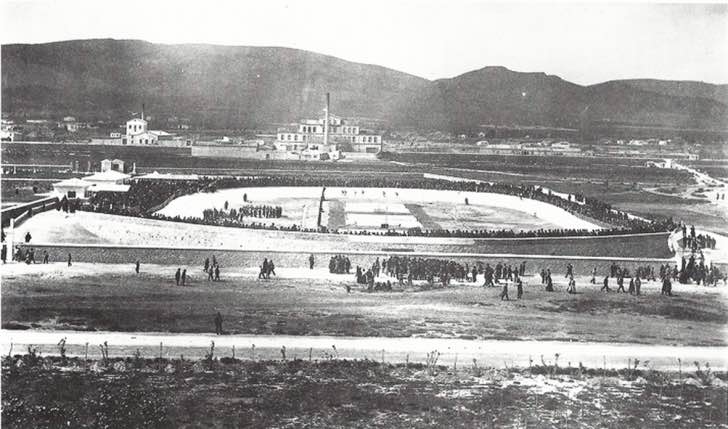
Known as ‘the pirate ship’ for reasons that aren’t exactly all that clear, the Greece national team played football for the first time at the Intercalated Games in Athens in 1906. At the end of the First World War Paris hosted the Inter-Allied Games, which the Greeks played in. They also entered a team into the 1920 Summer Olympics, held in Antwerp. In spite of all of that, the country’s first appearance at a major tournament didn’t occur until they reached the group stages of UEFA’s 1980 European Championships, hosted by Italy.
Greece didn’t get to play in a FIFA World Cup tournament until 1994 when they qualified for the competition that was to be held in America. The country’s greatest triumph on the international stage occurred exactly ten years later when they emerged from the 2004 European Championships as winners. The fact that they defeated the hosts Portugal in the final made it all the sweeter for them and also increased the shock value for everyone else. To date they have struggled to repeat that achievement, though they have at least qualified for most major tournaments since they were crowned champions of Europe.
About Olympiacos

If you wanted to give the side its full name then you’d have to call it Olympiacos Club of Fans of Piraeus. You probably don’t, though, so Olympiacos will work fine. You probably won’t be surprised to learn that club takes its name from the Olympics that was born in Athens. Indeed, the profile of an Olympic athlete still adorns the team’s badge to this day. The club claims to be the most popular Greek side in the world, with more than three million fans in the country itself and many more living elsewhere.
Perhaps their popularity has something to do with how successful they have been over the years. When it comes to trophies, Olympiacos is the best Greek team of all time. They have picked up 46 top-flight titles and counting, 28 Greek Cups and 4 Greek Super Cups. That includes eighteen doubles of the league and Greek Cup. If you’re a fan of quirky facts then you’ll be interested to know that Olympiacos have won more titles than the rest of the Greek teams combined.
Georgios Karaiskakis History
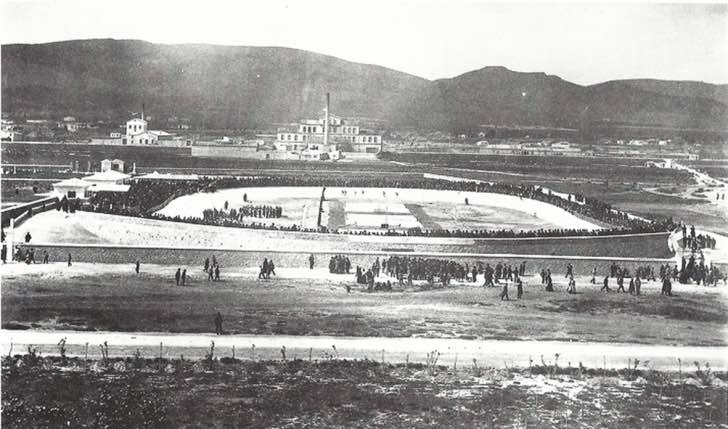
In 1896 the Summer Olympics were held in Greece and needed a venue for the cycling events. That was when the Neo Phaliron Velodrome opened its doors for the first time, witnessing a Frenchman by the name of Paul Masson taking all three Gold medals in the discipline. The velodrome later became known as The Georgios Karaiskakis Stadium, with Olympiacos moving into the ground after the club was formed in 1925.
One of the most important moments in the venue’s history came on the 8th of February 1981. Olympiacos played their fierce rivals AEK Athens and absolutely trounced them, winning the match 6-0. Fans attempted to rush outside to celebrate the result but a partially closed exit door delayed them. Supporters at the front fell down the last few steps and those behind kept coming, unaware they were trampling them. Nineteen fans died inside the stadium and two more succumbed to their injuries in the hospital.
Future Developments
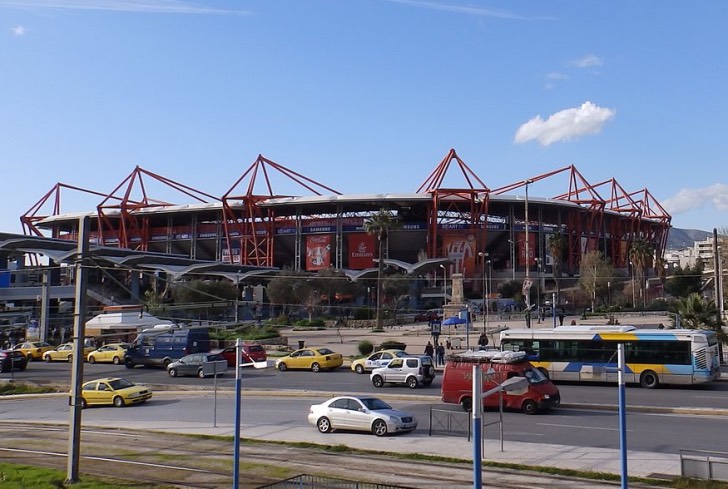
The stadium was completely rebuilt in 2004. Consequently there are no major plans to make changes to it any time soon.
